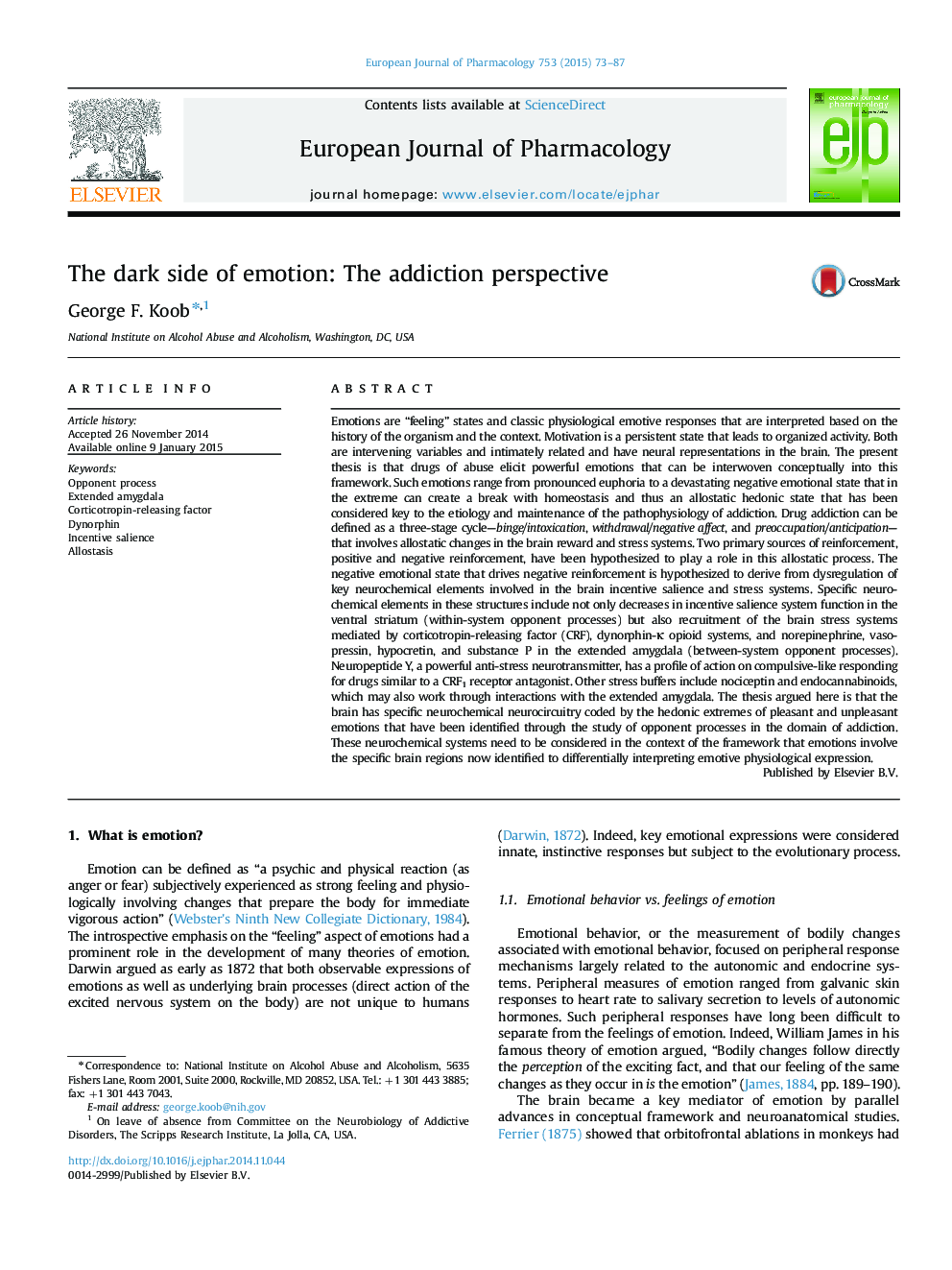| کد مقاله | کد نشریه | سال انتشار | مقاله انگلیسی | نسخه تمام متن |
|---|---|---|---|---|
| 5827460 | 1558928 | 2015 | 15 صفحه PDF | دانلود رایگان |
Emotions are “feeling” states and classic physiological emotive responses that are interpreted based on the history of the organism and the context. Motivation is a persistent state that leads to organized activity. Both are intervening variables and intimately related and have neural representations in the brain. The present thesis is that drugs of abuse elicit powerful emotions that can be interwoven conceptually into this framework. Such emotions range from pronounced euphoria to a devastating negative emotional state that in the extreme can create a break with homeostasis and thus an allostatic hedonic state that has been considered key to the etiology and maintenance of the pathophysiology of addiction. Drug addiction can be defined as a three-stage cycle-binge/intoxication, withdrawal/negative affect, and preoccupation/anticipation-that involves allostatic changes in the brain reward and stress systems. Two primary sources of reinforcement, positive and negative reinforcement, have been hypothesized to play a role in this allostatic process. The negative emotional state that drives negative reinforcement is hypothesized to derive from dysregulation of key neurochemical elements involved in the brain incentive salience and stress systems. Specific neurochemical elements in these structures include not only decreases in incentive salience system function in the ventral striatum (within-system opponent processes) but also recruitment of the brain stress systems mediated by corticotropin-releasing factor (CRF), dynorphin-κ opioid systems, and norepinephrine, vasopressin, hypocretin, and substance P in the extended amygdala (between-system opponent processes). Neuropeptide Y, a powerful anti-stress neurotransmitter, has a profile of action on compulsive-like responding for drugs similar to a CRF1 receptor antagonist. Other stress buffers include nociceptin and endocannabinoids, which may also work through interactions with the extended amygdala. The thesis argued here is that the brain has specific neurochemical neurocircuitry coded by the hedonic extremes of pleasant and unpleasant emotions that have been identified through the study of opponent processes in the domain of addiction. These neurochemical systems need to be considered in the context of the framework that emotions involve the specific brain regions now identified to differentially interpreting emotive physiological expression.
Journal: European Journal of Pharmacology - Volume 753, 15 April 2015, Pages 73-87
